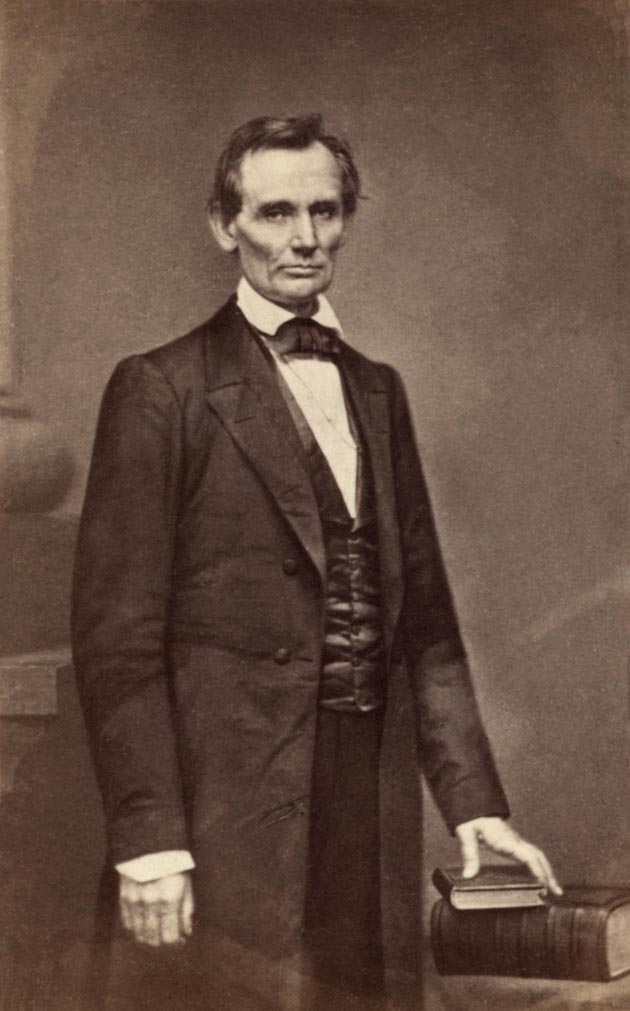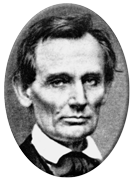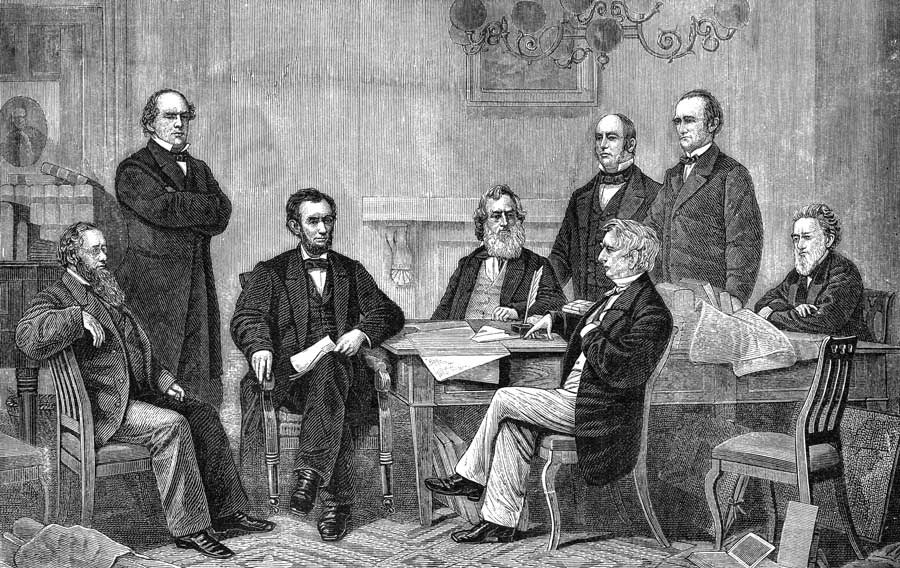
by Joseph E. Garrera
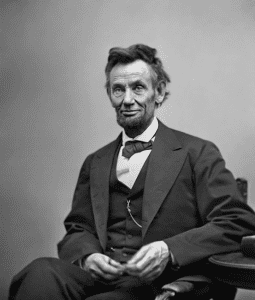
On March 6, 1978, a gathering of more than thirty students of the Lincoln theme participated in a special meeting in New York City. Their objective was the establishment of a local organization dedicated to studying the life and times of Abraham Lincoln.
New York had not always been without an organization devoted to Lincoln studies. Seven decades earlier, on February 12, 1908, an organization known as “The Lincoln Fellowship” convened their first meeting in New York City, attended by many luminaries engaged in Lincoln studies.
The Lincoln Fellowship of 1908 was so enormously rich with national talents that it selected seven distinguished scholars to serve as vice presidents. Among those selected were Ida Tarbell, Alexander McClure, Alonzo Rothchild, Joseph B. Oakleaf, Judge Daniel Fish, General James Grant Wilson, and Charles W. McLellan. Sadly, nothing is permanent, and the Lincoln Fellowship of 1908 was no exception. In less than a decade, it faded out of sight. For too long residents of New York and the tri-state area had to journey to Springfield, Illinois, nearly halfway across the country, to hear and participate in Lincoln symposia. Now that was all about to change.
The man who initiated the process was William Kaland, a prominent figure who in the period between 1950 and 1975 developed an engaging career in television and radio. As an executive producer at Westinghouse Broadcasting, Kaland had the privilege of interviewing Carl Sandburg on television and producing the award-winning television series, The American Civil War. Kaland, a devoted student of Lincoln and a Lincoln collector, possessed numerous historical relics including a rare edition of Frederick Hill Meserve’s album of prints made from Mathew Brady’s original glass plate negatives.
Legendary rare book and manuscript dealer, Ralph G. Newman of Chicago, alerted Kaland to others in the New York metropolitan area who shared an affinity for Lincoln studies. Among Kaland’s earliest contacts was Richard Sloan, who, during the 1970s, published The Lincoln Log, a specialized newsletter that delved into the Lincoln assassination and other related topics. Almost immediately, this committed group of Lincoln students began to take shape.
In retrospect, several of those early pioneers have advanced to become noted figures in the Lincoln historical community. Harold Holzer, perhaps currently America’s most prolific Lincoln author, offered his support. Arnold Gates, who for twenty years was among the nation’s leading reviewers of Civil War and Lincoln books, was also among the group’s pioneers. Hal Gross, a successful New York entrepreneur, and Milton Seltzer, a New York school administrator, signed on as early supporters.
Also joining was John Lattimer, a noted military physician at the Nuremberg military trial in 1945. Lattimer was a nationally recognized collector of artifacts associated with the Lincoln assassination and the author of several important books. Offering his support was Hans L. Trefousse, a specialist on the Civil War and Reconstruction era at the City University of New York and the author of more than a dozen books. Rounding out the roster that would convene that first meeting were George Craig of the Civil War Round Table of New York, and Larry West, a serious collector of Lincoln photographs who would serve as the Lincoln Group of New York’s first president. On March 6, 1978, thirty plus charter members gathered at the William Club in New York City to hear Dr. Mark E. Neely, Jr., deliver the organization’s first lecture.
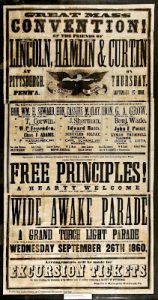
1860 Campaign Broadside
Today the roster of past speakers reads like an award-winning cast in Lincoln scholarship. Lincoln manuscript and rare book dealer Ralph Newman, R. Gerald McMurtry, past director of the Lincoln Museum in Fort Wayne, Indiana, Gabor Boritt, Lincoln biographer Stephen B. Oates, Frank J. Williams, Professor James M. McPherson, and the legendary David Herbert Donald have all presented notable lectures before The Lincoln Group of New York. Lloyd Ostendorf once made the case in a provocative lecture that he had discovered Lincoln’s reading copy of the Gettysburg Address.
Noted photographic expert Grant Romer of the Rochester, New York, George Eastman House once made a presentation that attempted to validate the authenticity of the circa 1843 Hoffmann daguerreotype, an image previously promoted as the earliest photograph of Abraham Lincoln. In 1982, Joan Chaconas of the Surratt Society in Clinton, Maryland, and past president of the Lincoln Group of Washington, DC, presented a lecture that detailed the destructive storage conditions surrounding the Osborn Oldroyd Lincoln Collection owned by the National Park Service. Eventually Chaconas’s efforts marshaled support to correct the substandard storage conditions.
In 1988, the group instituted an annual “Award of Achievement.” The award committee consists of three dedicated members with one rotating off each year. The award committee is responsible for reviewing every new Lincoln publication, documentary, and project in the country, ultimately selecting the contribution that has done the most to encourage the study and appreciation of Abraham Lincoln.
The membership rolls and meetings attract a diverse group of participants from those interested in an occasional Lincoln lecture to others fully engaged in researching and writing their own books. One trait that every member has in common is an interest in hearing the latest thoughts and research presented by leading authorities in the Lincoln field.
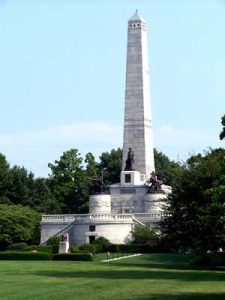
Lincoln's Tomb
The Lincoln Group of New York convenes three times each year in New York City. Most meetings are scheduled to coincide with a special date in Lincoln’s life. The November meeting opens the Lincoln season and is scheduled as close to the anniversary of the Gettysburg Address as is reasonably possible. The February meeting convenes between the first and the third week of the month, close to Lincoln’s birthday. The April meeting convenes as close to April 14 as possible — its theme is typically the Lincoln Assassination.
After a cocktail hour, banquet meal, and several brief announcements, the guest speaker takes the lectern presenting a scholarly lecture lasting an average of forty-five minutes. At the conclusion, questions are taken. The question-and-answer period can be the most fascinating aspect of the program, ultimately revealing the depth of the speaker’s knowledge.
One great strength of the organization lies with the governing executive committee, which after a quarter of a century is composed almost exclusively of charter members. Remarkably, their primary objectives have remained consistent, including keeping matters simple and not allowing the organization to be strangled by unnecessary regulations and by-laws. And most importantly, a paramount desire is to make every meeting a memorable occasion for all that attend. As The Lincoln Group of New York celebrates its twenty-fifth anniversary, it remains committed to its primary objective — studying the life and times of Abraham Lincoln.
Joseph E. Garrera is a past president of The Lincoln Group of New York. This history first appeared in The Lincoln Group of New York 25th Anniversary Commemorative Publication in 2003.
The Lincoln Group of New York - Officers
PRESIDENT
Paul Ellis-Graham
VICE-PRESIDENT
Rob Kaplan
SECRETARY
Fran Berman
TREASURER
Howard Rosenthal
EXECUTIVE COMMITTEE
Henry F. Ballone
Anthony Czarnecki
Harold Holzer
Paula Hopewell
Steven R. Koppelman
Robert G. Langford
Stuart Schneider
Richard E. Sloan
Joseph A. Truglio
AWARD COMMITTEE
Rob Kaplan, Chair
Anthony Czarnecki
Paula Hopewell
FOUNDING MEMBERS
George Craig (1915-2003)
William J. Kaland (1915-1983)
FOUNDING PRESIDENT
Larry West
HONORARY MEMBERS
Jean H. Baker
Jay Mellon
Mark E. Neely, Jr.
Frank J. Williams
